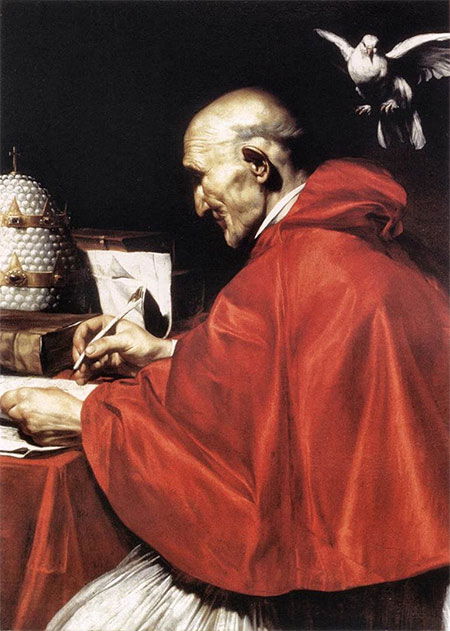Death of Pope Gregory the Great
The first pope to call himself ‘servant of the servants of God’ died on March 12th, 604.

The famous story about Pope Gregory I, before he became pope, seeing some fair-haired English boys in a slave-market in Rome and saying, ‘Not Angles, but angels’ appeared in the first biography of him, which was written by an anonymous monk of Whitby around or soon after 700. It is one of the earliest Anglo-Saxon anecdotes to have survived. English Catholics took a particular interest in Gregory because it was he who sent St Augustine to Kent in 597 to bring Roman Christianity to a country whose Celtic Christians did not recognise the supremacy of Rome and where paganism still flourished.
Gregory had been pope since 590, when he was about 50 years old. He came from a rich, patrician Roman family with a house on the Caelian Hill, where he spent his childhood. They were devout Christians and when Gregory was in his 30s, after working his way up to being the prefect, or principal administrative officer of Rome, he gave his money away, turned his family home into a monastery and became a monk in it, in 574. He was too able to be left there and before long he was sent to Constantinople to represent Pope Pelagius II. Recalled to Rome in 585, he was made abbot of his monastery and when Pelagius died in 590, with the Western world in turmoil and Rome menaced by the Germanic Lombards, a man of marked practical capacity, energy and initiative was needed to take charge. No one apparently was in much doubt about who it should be.
The Roman Empire in the West was finished, overwhelmed by the Germanic invasions. ‘The towns are destroyed, the cities ruined, our fatherland is devastated,’ Gregory said in one of his homilies. ‘Where is the state of Rome, once the mistress of the world?’ He evidently saw the papacy as the rock on which a new spiritual empire and civilised order could be built, which made him a key predecessor of the medieval popes. Accepting that the barbarians had come to stay, he spent his years in St Peter’s chair sending missionaries to convert them to Christianity or where necessary wean them off the Arian heresy. He said he would like to have been a missionary himself. His talents, however, kept him in Rome, running the city, trying to steer barbarian kings and queens of brutal and uncertain temper along the right path, reorganising the Church’s finances and administration, and writing a much-admired book of practical advice for bishops and priests as well as homilies and commentaries on books of the Bible. He also revised the liturgy and left his name to Gregorian chant.
Lamed by arthritis at the end of his life, Gregory died in Rome and was buried in the basilica of St Peter. The first pope to call himself ‘servant of the servants of God’, he was recognised immediately as a saint.